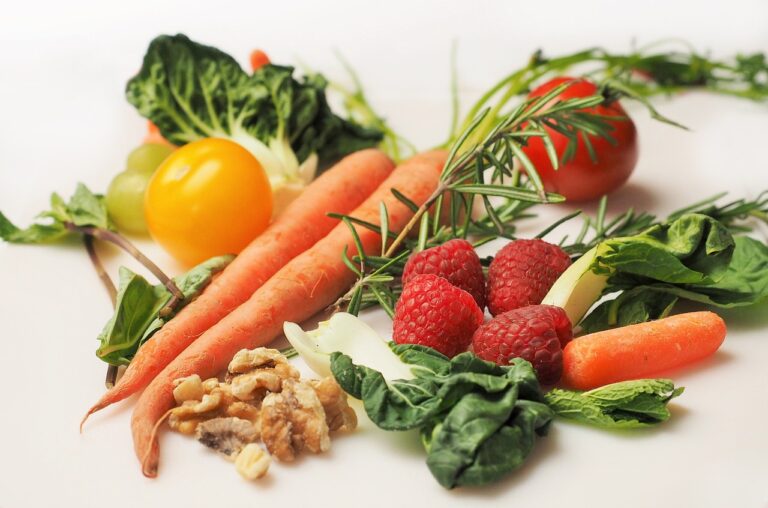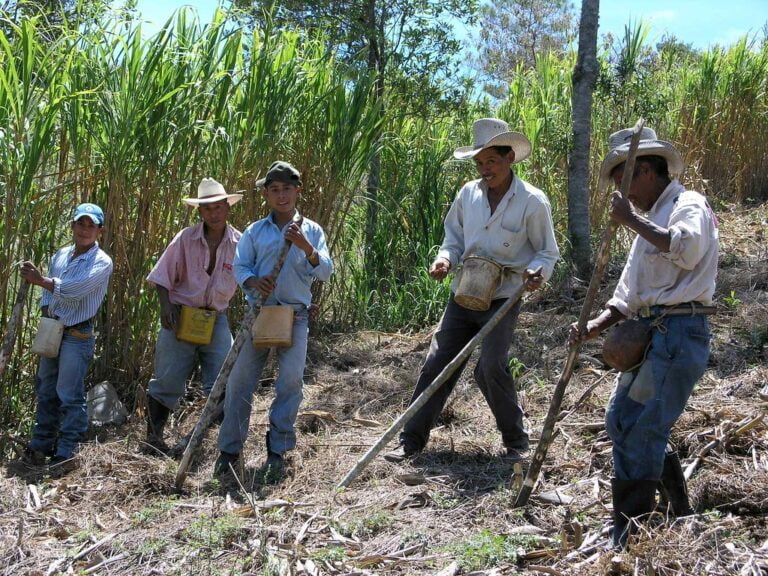Kid-Friendly Vegetables to Grow: the Educational Benefits of Gardening With Children
Are you looking for a fun and educational activity to do with your kids? Discover the benefits of gardening with children and learn about the educational opportunities it provides. In this article, we'll explore the science behind growing vegetables, different varieties to try, and how gardening teaches responsibility, nutrition, and creativity. Get ready to dig in the dirt, watch plants grow, and cultivate a love for healthy eating habits with your own homegrown veggies. Let's get started!
The Science Behind Growing Vegetables
To understand the science behind growing vegetables, you need to get your hands dirty and delve into the fascinating world of soil, water, and sunlight. Understanding plant growth is essential in order to successfully cultivate a bountiful vegetable garden. Plants rely on a process called photosynthesis to produce their own food. During photosynthesis, plants use sunlight, carbon dioxide, and water to create glucose, a form of sugar that provides them with energy. This process takes place in the leaves of the plant, where chlorophyll, a green pigment, captures the sunlight. The glucose produced is then used for growth and development, allowing plants to produce leaves, flowers, and fruits. By understanding the photosynthesis process, you can provide your vegetables with the optimal conditions they need to thrive and produce a fruitful harvest.
Exploring Different Vegetable Varieties
Explore the many different vegetable varieties that are perfect for growing with your children. When it comes to picky eaters, introducing them to a variety of vegetables can help expand their palate and encourage a healthier diet. Carrots, cherry tomatoes, and sweet peppers are great options because of their vibrant colors and sweet flavors. If you have limited space, consider growing vegetables that can thrive in containers or small garden beds. Radishes, lettuce, and herbs like basil and mint are perfect for small spaces and can be easily grown in pots or vertical gardens. By exploring different vegetable varieties, you not only provide your children with a hands-on learning experience, but you also create a fun and engaging way to introduce them to new, nutritious foods.
Teaching Responsibility Through Gardening
As a parent or caregiver, you can instill a sense of responsibility in your children by involving them in gardening. Teaching responsibility through gardening is a wonderful way to help children develop essential life skills while also having fun. Gardening requires patience, as plants take time to grow and thrive. By nurturing their plants and waiting for them to bear fruit or vegetables, children learn the value of patience and delayed gratification. Additionally, gardening provides an opportunity to build teamwork. Working together to prepare the soil, plant seeds, water the plants, and harvest the produce teaches children the importance of cooperation and collaboration. They learn that by working together, they can achieve greater results and accomplish tasks more efficiently. Gardening not only teaches responsibility but also fosters a sense of community and service to others. So, grab your gardening tools and get ready to plant the seeds of responsibility in your children!
Learning About Nutrition From the Garden
Discover the nutritional value of homegrown vegetables by involving your children in gardening. Not only is gardening a fun activity for the whole family, but it also provides an excellent opportunity to teach your children about nutrition. By growing their own vegetables, kids can learn firsthand about the health benefits of consuming fresh produce. They can see how their hard work and care in the garden translates into nutritious meals on their plates.
Nutrition education is an important aspect of gardening with children. As they plant, water, and harvest their vegetables, they can learn about the different vitamins and minerals that each vegetable provides. They can also gain an understanding of the importance of a balanced diet and how their choices impact their overall health.
In addition to the educational benefits, gardening encourages children to eat healthier. Studies have shown that kids who are involved in growing their own food are more likely to try and enjoy a wider variety of fruits and vegetables. This hands-on experience fosters a sense of pride and ownership, making children more inclined to eat what they have grown.
Cultivating Creativity Through Vegetable Gardening
By involving your children in vegetable gardening, they can cultivate their creativity while reaping the educational benefits of learning about nutrition. Gardening provides a unique opportunity to promote imagination in the garden and foster artistic expression through vegetable gardening. Encourage your children to think outside the box and come up with innovative ways to design their garden space. They can create colorful signs to label the different vegetables, or even paint rocks to add a touch of creativity to the garden. Additionally, they can use vegetables as natural art materials to create unique prints or sculptures. The possibilities are endless! Gardening not only nourishes their bodies with fresh produce, but also nurtures their artistic souls and encourages them to explore their creativity.
Developing Fine Motor Skills in the Garden
Continue to engage your children in vegetable gardening to further develop their fine motor skills in the garden. Gardening is an excellent activity for children to improve their hand-eye coordination and concentration. As they plant seeds, water plants, and harvest vegetables, they refine their ability to use their hands and fingers with precision. The act of carefully handling small seeds and transplanting delicate seedlings requires concentration, helping children to focus their attention and develop patience. By engaging in these tasks, children also strengthen their hand muscles, which is beneficial for future activities such as writing and drawing. Gardening provides a practical and enjoyable way for children to enhance their fine motor skills while also learning about nature and the importance of healthy eating. So, grab your gardening tools and get ready to watch your children flourish!
Understanding the Life Cycle of Plants
To fully grasp the educational benefits of gardening with children, it is essential to understand the life cycle of plants. Understanding pollination and observing plant growth are key aspects of this cycle. Pollination is the process by which plants reproduce, and it involves the transfer of pollen from the male parts of a flower to the female parts. This can happen through wind, insects, or even human intervention. By teaching children about pollination, they can learn how plants rely on different factors for reproduction. Observing plant growth allows children to witness the various stages of a plant's life, from seed to sprout, to mature plant, and finally to producing seeds of its own. This hands-on experience teaches children patience, responsibility, and the importance of nurturing living things. By understanding the life cycle of plants, children can develop a deeper appreciation for nature and the environment.
Discovering the Importance of Soil Health
As you explore the educational benefits of gardening with children, it is important to delve into the significance of soil health. Soil composition plays a vital role in the success of your garden. By understanding the different components of soil, such as sand, silt, and clay, you can create an environment that is ideal for plant growth. Additionally, teaching children about composting techniques can help them understand the importance of recycling organic matter and nourishing the soil. Composting not only reduces waste, but it also enriches the soil with essential nutrients that plants need to thrive. Encourage children to participate in composting by collecting kitchen scraps, yard waste, and other organic materials. By actively involving them in soil health practices, you are teaching them valuable lessons about sustainability and the interconnectedness of the natural world.
Encouraging Environmental Stewardship Through Gardening
By actively involving children in gardening, you can instill in them a sense of environmental stewardship. Gardening provides a hands-on way for children to learn about environmental conservation and sustainable living. As they plant seeds, tend to plants, and harvest vegetables, children develop a deeper appreciation for the natural world and the importance of taking care of it.
Through gardening, children learn about the interdependence of living organisms and the impact of human actions on the environment. They become aware of the need to conserve resources, reduce waste, and protect biodiversity. They learn that sustainable living practices, such as composting, conserving water, and using organic methods, can help create a healthier planet.
Gardening also teaches children responsibility and empathy. They understand that their actions directly affect the growth and well-being of the plants they care for. By observing the life cycle of plants, children learn to value the environment and develop a sense of stewardship.
Promoting Healthy Eating Habits With Homegrown Veggies
Grow a variety of kid-friendly vegetables in your garden to encourage healthy eating habits and empower your children to make nutritious choices. Promoting healthy eating habits is essential for the well-being of your children, and what better way to do that than by growing your own veggies at home? When kids are involved in the process of growing vegetables, they develop a sense of responsibility and ownership over what they eat. They become more aware of where their food comes from and the effort it takes to produce it. By teaching them to care for the plants, water them, and watch them grow, you instill in them a sense of pride and accomplishment. They will be more inclined to try new vegetables and appreciate the flavors and textures that homegrown produce offers. So, get your hands dirty, involve your children in the gardening process, and watch as they develop a lifelong love for healthy eating.
Frequently Asked Questions
How Can Gardening With Children Improve Their Overall Mental Health and Well-Being?
Gardening with children can improve their mental health and well-being. It allows them to connect with nature, learn responsibility, and experience the joy of watching plants grow. It's a fun and educational activity that benefits their overall development.
Are There Any Specific Vegetables That Are Easier to Grow With Children?
Growing vegetables with children can be a fun and educational activity. Some easy-to-grow vegetables include carrots, tomatoes, and lettuce. These veggies can teach kids about planting, nurturing, and harvesting their own food.
What Are Some Tips for Getting Children Excited and Engaged in the Gardening Process?
To get kids interested in gardening and make it fun for them, start by showing them the wonders of nature. Teach them about plants, involve them in planting and caring for vegetables, and let them see the fruits of their labor.
Can Gardening With Children Help Develop Their Problem-Solving Skills?
Gardening activities can be a fun way for children to develop problem-solving skills. By engaging in tasks like planting, watering, and harvesting, they learn to solve issues like pests or plant diseases.
How Can Gardening With Children Foster a Sense of Connection With Nature and the Environment?
Gardening with children can foster a sense of wonder and environmental awareness. It allows them to connect with nature, appreciate its beauty, and understand the importance of taking care of the environment.
Conclusion
In conclusion, gardening with children is a fantastic way to not only teach them about science and nutrition, but also to instill a sense of responsibility, creativity, and environmental stewardship. By growing their own vegetables, children can learn about the life cycle of plants, the importance of soil health, and the benefits of healthy eating. So why not grab some seeds and get started? It's a fun and educational activity that the whole family can enjoy!






